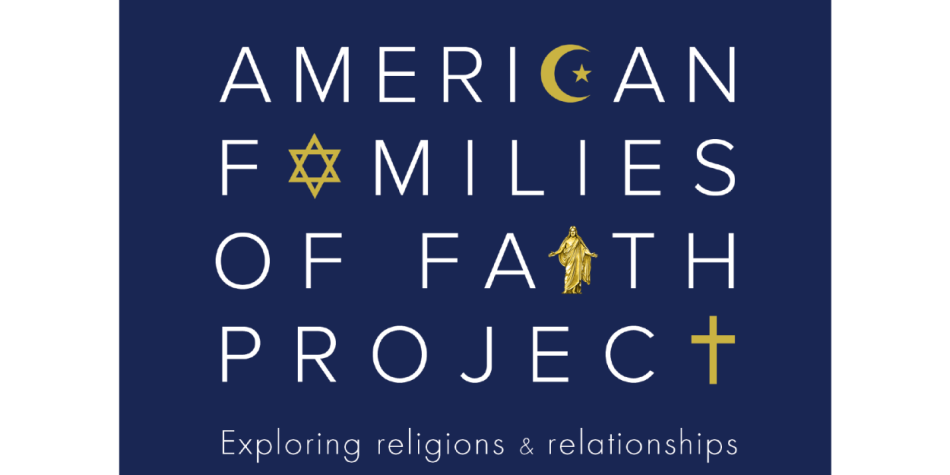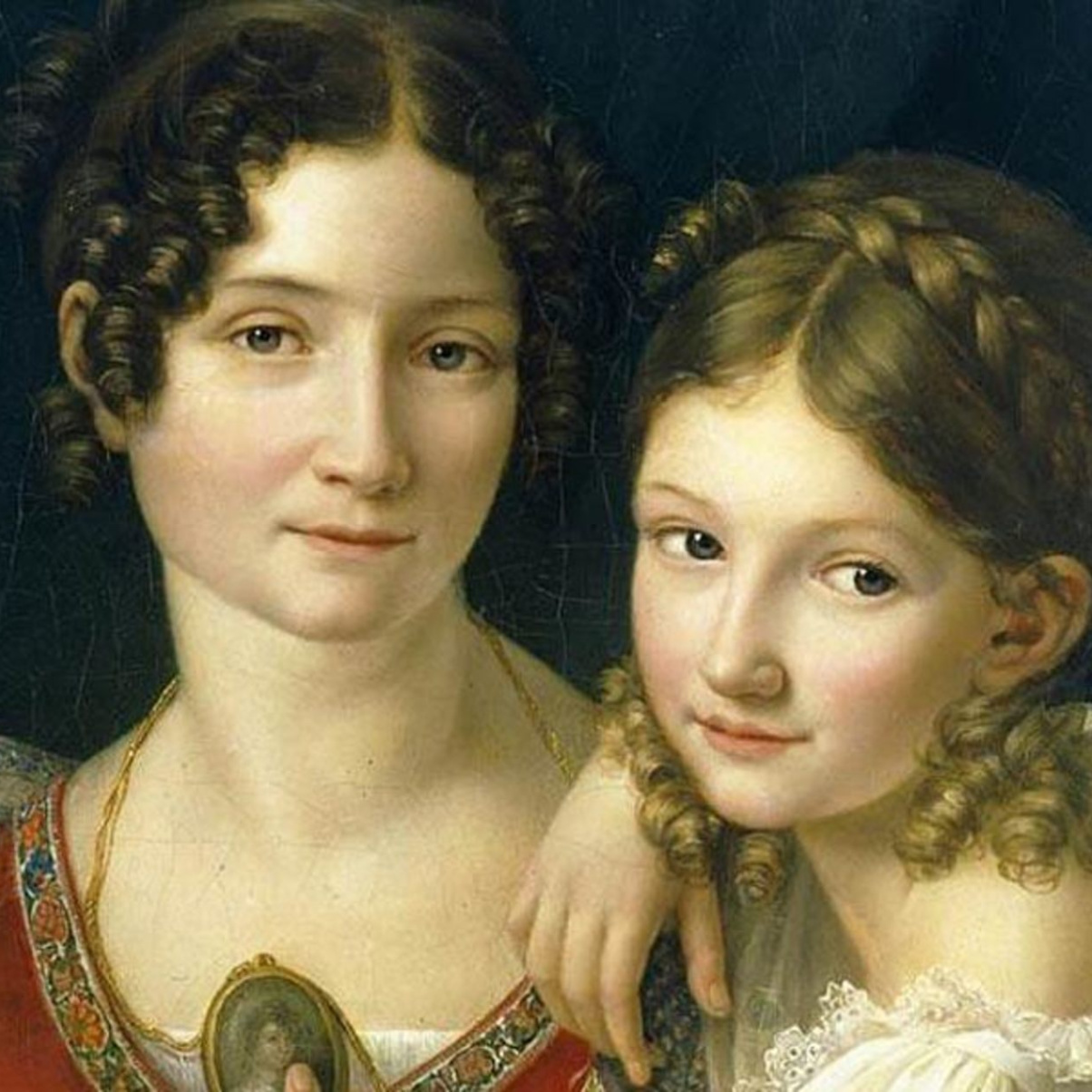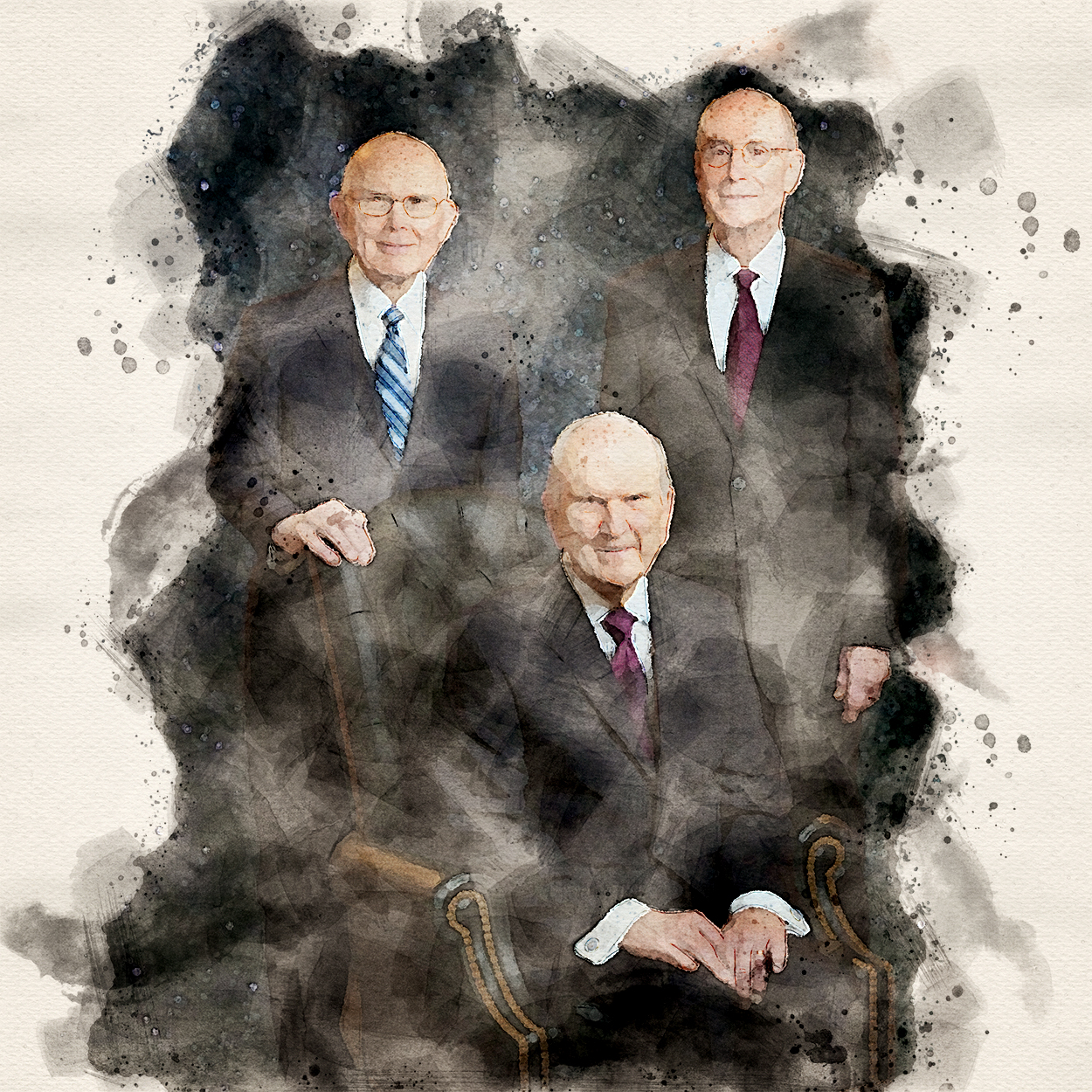Despite living in the Age of the Internet, with the seeming promise of increased access to information yielding increased understanding, tolerance, and civility among people, we seem to be moving in the opposite direction. Sadly, we live in an era of ignorance, misunderstanding, suspicion, and hostility across racial, ethnic, religious, political, and national boundaries with only a small degree of what religious studies scholar Stephen Prothero calls religious literacy.
We hope the articles in this special section of Public Square can contribute toward greater understanding across at least two of those divides: religion and race/ethnicity. We hope readers come away from these articles with a deepened appreciation and respect for those of various religious-ethnic communities.
The eleven/twelve articles and accompanying podcasts in this section are based on our new book Strengths in American Families of Faith: Exploring Religious Differences. We are professors of family life at Brigham Young University and co-directors of the American Families of Faith project. Our last 20 years of research focus on exploring the ways that religious beliefs, practices, communities, and experiences influence marriage and parenting.
Toward Religious Understanding
In the long, dark shadow of the terrorist attacks of September 11, 2001, we think that it is incumbent upon all social scientists—especially those who study religion—to foster what the late Krister Stendahl called religious understanding. Stendahl was Dean of the Harvard Divinity School and then Lutheran Bishop of Stockholm. Well before 9-11, to guide his own relationship with other faiths, Stendahl formulated three “rules of religious understanding.” Rule 1: When you are trying to understand another faith, you should ask adherents of that faith for information rather than critics or enemies of that faith. Rule 2: Do not compare the best things about your own religion with the worst things of other faiths but rather compare bests with bests. Rule 3: You should leave sufficient room for “holy envy.” By holy envy, Stendahl meant a deep appreciation for the things about another faith that you admire so deeply you are inclined to wish they were part of your own faith. We are confident that some ways of being religious are more likely to strengthen marriage and family relationships than are other ways of being religious, while other religious expressions undermine and harm.
This approach is counter to both religious fundamentalism and to a philosophical product of the 9-11 era: New Atheism typified by “The Four Horsemen of New Atheism”: Richard Dawkins, Daniel Dennett, Christopher Hitchens, and Sam Harris. While religious terrorists have murderous contempt for another religion, or perhaps all religions other than their own, New Atheists have withering contempt for the idea of God and for all religions. Religious fundamentalists are certain that only their religion has any truth or goodness. New Atheists express certainty that all religions are stupid and dangerous. In contrast to both views, we believe that certain kinds of religious or antireligious certainty are risky. Yet this does not mean all religious approaches are somehow equal in impact or nature. Based on our work, we are confident that some ways of being religious are more likely to strengthen marriage and family relationships than are other ways of being religious, while other religious expressions undermine and harm.
The American Families of Faith Project
We had a burning question about relationships: “How do you build a strong marriage and family in the 21st century?” Our unmarried and skeptical university students, many of whom had seen the divorce of their own parents, wanted to know even more desperately than we did.
The next question was: “How, as social scientists, can we find the best answers to that question?” For better or worse, here’s how we, through the American Families of Faith national research project (https://americanfamiliesoffaith.byu.edu), have tackled that dilemma over the past two decades.
In 2001, in the immediate aftermath of the tragic events of 9-11, we began to interview highly religious American families from the Abrahamic faiths (Jewish, Christian, and Muslim) regarding the intersection or nexus between faith and family life—their religion and their relationships.
We contacted and interviewed religious leaders from various faiths and asked them if they would be willing to recommend a couple of exemplary families from their congregation that we could interview about connections between their faith and their family relationships. We engaged in in-depth interviews with these families in their homes. We heard about their key challenges, their beliefs, their practices, their faith communities, their struggles, their joys, their marriages (in some cases, their previously failed marriages, divorces, and remarriages), and their children. We sat with them face-to-face and listened to their individual and collective stories. We were affected, inspired, and sometimes saddened by what we heard.
An early and ongoing effort was to convey our participants’ voices with fidelity, clarity, and validity. The observance of so much good among and across highly diverse families of faith germinated a desire to reflect the best and most positive of what we learned. How did these families build marital and parent-child relationships of a quality admired within and by their communities? What challenges had they overcome? What were the sacred meanings and motivations that sustained them? How did they do it? One of our central aims became working toward a social science-informed list of best practices for families of faith.
Indeed, the mission of the American Families of Faith project is “to engage in rigorous scholarship that thoughtfully explores the nexus of faith and family life in order to discover and share research-based ideas about ways of helping one’s faith (a) facilitate human joy and relational quality and stability, and (b) help religious individuals, couples, and families thrive in a culture that is increasingly challenging for families of faith.”
Public Square has invited us to co-author a series where we share the multi-faceted answers we have found. Over the past 20 years, we have interviewed nearly 300 families (about 700 individuals) from more than 20 different branches or denominations of Judaism, Christianity, and Islam—as well as 35 Religiously Unaffiliated couples or “Nones.” We have visited all eight of Silk and Walsh’s diverse “religious regions” of the United States and made a concerted effort to expand beyond the White, middle-class, Christian samples that dominated preceding social science work on religion and family. In fact, we intentionally over-sampled racial and ethnic minority families to ensure that they comprised more than half (51%) of our total sample.
Based on a trove of about 10,000 double-spaced pages of in-depth interview data, our team has produced more than 100 related peer-reviewed publications. We were able to drill deeply into the reports of specific groups (e.g., African American fathers, Jewish families, Muslim mothers) or into specific topics (e.g., parent-child religious conversations, family rituals, struggles that stem from religion).
With the American Families of Faith project, we have an unusual opportunity to relay to you as a reader some of the best of what we were taught about families and faith by nearly 700 diverse Americans who welcomed us into their homes and shared the stories of their faith and family lives with us. We are pleased to share with you the collective gift that we have been given by these families and hope that their stories will inspire and encourage you, as they have us.
In our series of articles that commences with this one, we will respectively focus on eight religious-ethnic communities in our sample including (in alphabetic order): Asian Christian, Black Christian, Catholic & Orthodox Christian, Evangelical Christian, Jewish, Latter-day Saint, Mainline Christian, and Muslim communities. See Table 1 on our web page for a summary of the diverse sample of families from the various religious-ethnic communities that we will address in these articles.
The late rock artist Frank Zappa quipped that: “Writing about music is like dancing about architecture.” Similarly, is it possible to use the tools of social science to illuminate both religion and relationships? Is it truly possible to enter into another person’s sacred, internal, and relational world—even if just for a while? The great Sufi mystic Rumi suggested that it is not possible unless you are able to go within someone and see them as they see themselves:
Study me as much as you like, you will not know me, for I differ in a hundred ways from what you see me to be. Put yourself behind my eyes and see me as I see myself, for I have chosen to dwell in a place you cannot see.
In the following excerpt from a rich and especially long interview, Joseph (participant names are pseudonyms), a Christian father from Pennsylvania, seems to underscore the same dilemma Rumi wrote about:
Joseph: Well, after talking through all this, I think you know a lot about my faith . . . and I think you know some things about my family and maybe some things about how I think faith affects my family, but I’m not sure that you know what faith does in my family. There’s something that . . . when as a family your hearts are pointed together toward the same thing, and it’s God, then parenting styles and economics and space and food and disagreements and hassles and joys and celebrations and all that other stuff . . . it works different, it seems different, it feels different. . . . Our family are all oriented in the same way. Christ is king, He’s center, He’s what it’s all about . . . but . . . I don’t know how to convey to you that . . . our faith informs our relationships and everything about us . . .
Interviewer: [So], we have still come out of the other side of the interview with you saying that we still haven’t captured it all. . . . [I]f we had another four hours to sit here and talk through this, do you think that you could adequately put it into words?
Joseph: No. I think if you came and lived with me for six months, you’d have more of an understanding of the way [faith] gets [played out] in every day [family] life . . . the texture of life that somehow doesn’t get [fully] captured in these questions. . . . [But] if you lived in it for a while, you’d say, “I know what [faith] means”. . . . I don’t think that I have some kind of weird faith life that nobody can comprehend [but these questions about religion and relationships], these are big questions . . .
Big questions indeed. So how can we come to truly understand how the world of another person or family works? In lieu of living with a family for six months, perhaps the next best approach is that taken by the father of the psychology of religion, William James, in his classic The Varieties of Religious Experience—we can deeply listen to a person’s own experience with what they hold sacred. Most Americans seem unable or unwilling to devote much effort to better understanding the religious worlds of their fellow citizens.
A sad irony of life in contemporary America is that large numbers of people who devote a great deal of time, effort, and money to get into fictional alternate worlds, while at the same time, most Americans seem unable or unwilling to devote much effort to better understanding the religious worlds of their fellow citizens. Thus, many Americans spend hundreds of hours watching and reading about fictional worlds, yet know very little about the religious worlds of their neighbors, coworkers, friends, and family members. This can have real-world consequences. Religious hate crimes, particularly against minority faiths, are increasing. FBI data indicate that hate crimes against Muslims rose 67% between 2014 and 2015 and the first quarter of 2017 showed 541 anti-Semitic incidents including 161 bomb threats. Of course, very few will think about or perpetrate hate crimes, but our qualitative data likewise confirm that many members of religious minorities experience various forms of misunderstanding, bias, and discrimination. Our experience and observations have convinced us that as most people learn about the religious beliefs, practices, cultures, and experiences of their fellow citizens they become better friends, neighbors, and family members.
To push one step further, we have argued that a diverse team of persons listening and exploring is likely to comprehend and convey more truth than a single “monk in a cell.” Accordingly, the team we built to produce our recently published volume Strengths in Diverse Families of Faith consisted of 15 graduate students, two exceptional undergraduate students, and 15 “insider experts.” These insider experts include former presidents and section leaders of national and regional academic organizations in family studies, human development, religious studies, and political science, and a few who hold (or have held) endowed professorships or fellowships. Additionally, they had personal and familial experience “inside” the eight religious-ethnic communities we explored. With this rich team of 32 others supporting the project, we dove in.
So, does our research indicate that healthy ways of being religious can strengthen relationships and society? Yes. Does our research indicate that harmful ways of being religious can weaken relationships and hurt society? Yes. Given the observed dualism that religion can both help and harm, do we feel that social science should carefully examine the processes involved in both apparent realities? Yes. Accordingly, we seek to provide empirically-based information to help those couples and families who are religious to live their respective faith in the healthiest ways possible for the benefit of themselves, their children, their grandchildren, and their society.
In our inaugural column, we conclude with three insights (out of hundreds) gleaned from the exemplary families of faith that we interviewed.
- Exemplary families of faith balance firmness and flexibility. One thing that has stood out in analyzing interview reports from hundreds of religious and some non-religious families, is that there are dangers in being too rigid and unyielding . . . or too flexible and accommodating when it comes to religious practices, rituals, and observances. On one hand, compulsory family worship can be worse than no family worship at all. On the other, laxness in family rituals and an unwillingness to prioritize time together fail to generate the strength needed to stand against forces that weaken family relationships. Exemplary families find and honor a “golden mean” that synthesizes structure while maintaining a sensitivity to relational needs.
- Exemplary families have profound challenges but unite to face them. Our initial assumption was that the exemplary families clergy sent us to learn from would have fewer challenges than most. Shouldn’t their faith and/or lifestyle “buffer” them from many challenges? This notion largely crumbled. The families who opened their homes to us shared an array of challenges and stressors that were sometimes staggering. Many were carrying heavy loads. However, exemplary families reportedly “turned towards each other” and “leaned on each other” when hard times hit, often coming out of various kinds of challenges closer and stronger than before. Whether lifting a heavy load causes severe injury, or strengthens the muscles of the bearers seems contingent on how the burden is lifted, shouldered, and shared.
- Exemplary families were not always exemplary (or even close). Another striking finding was that without even being asked, nearly one couple in four spontaneously told us that “if not for our faith, we would have divorced.” One in four! If we had asked, the figure may have been much higher. Many couples mentioned that the first year or two, or even ten, were often “really, really hard” and frustrating as they personally and relationally developed the unselfishness required to turn ‘me into we.’ During “those tough years,” many of these couples likely would not have imagined that at some future point, their clergy would identify them as exemplary. We are reminded of a related report by demographer Linda Waite, “How many unhappy couples turn their marriages around? The truth is shocking: 86 percent of unhappily married people who stick it out find that, five years later, their marriages are happier.” Not only can marital trajectories improve with time, most do improve.
In forthcoming columns we will draw from the 300 diverse families we have interviewed and convey their pragmatically proven wisdom to those seeking to build an exemplary marriage and family of their own.
About the Authors:
In our increasingly diverse (and too often divisive) culture, it can be challenging to have enjoyable conversations or relationships with people with different beliefs and commitments than our own. We hope that the ideas and experiences shared in this special section of Public Square Magazine may help us all to treat others with whom we differ with respect, appreciation, and even admiration.
While we ourselves are active (devoted) members of The Church of Jesus Christ of Latter-day Saints, in our work in the American Families of Faith project, we seek to highlight the strengths of our friends of various faiths. We have developed a sense of deep respect and even holy envy for these families and their faiths. Additionally, the book chapters from which these articles are adapted included two coauthors who are devoted members of those faiths.
If you like listening to audiobooks and podcasts, we have recorded a set of conversations about the families we interviewed that includes additional quotes from mothers, fathers, and youth, more of our experiences in attending their services, as well as personal experiences with friends of other faiths. These podcasts are available at the sites below.
















